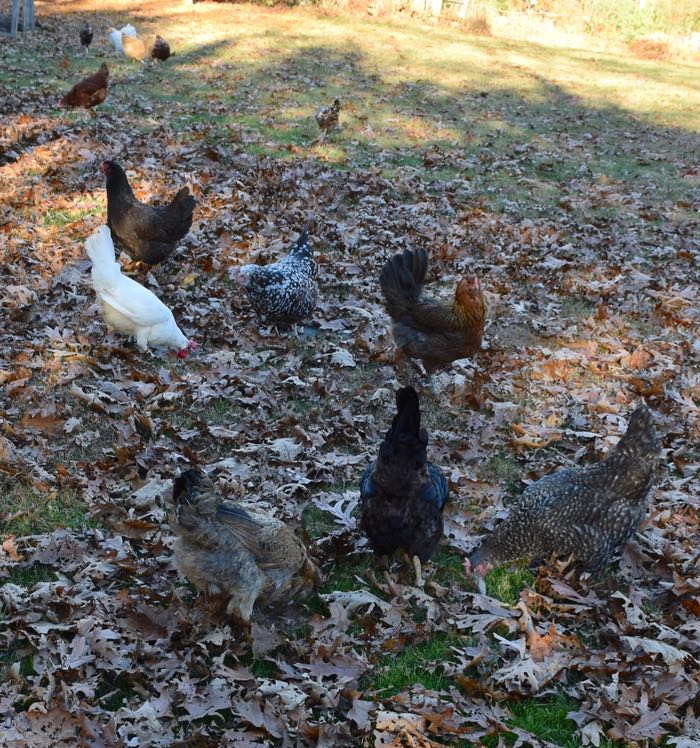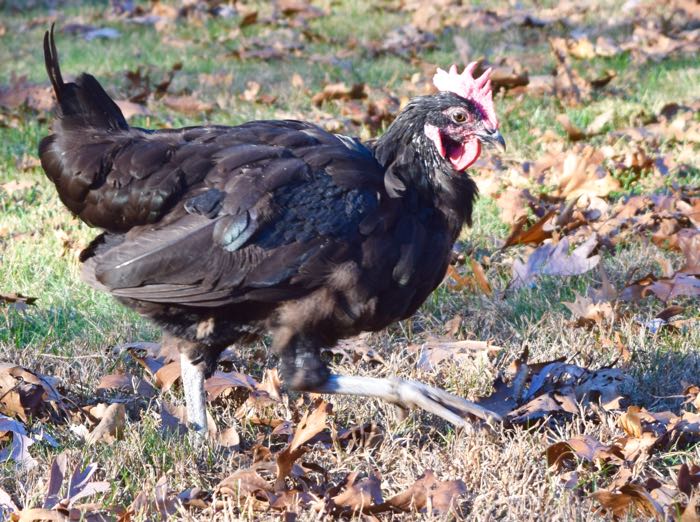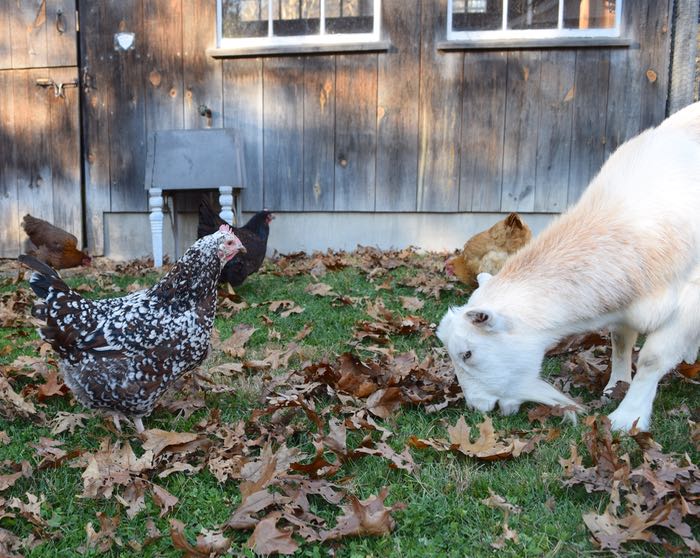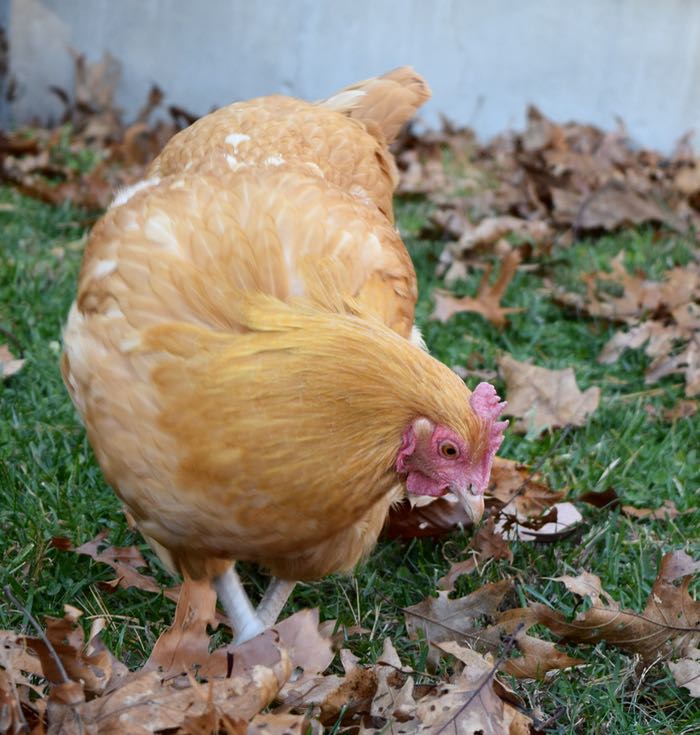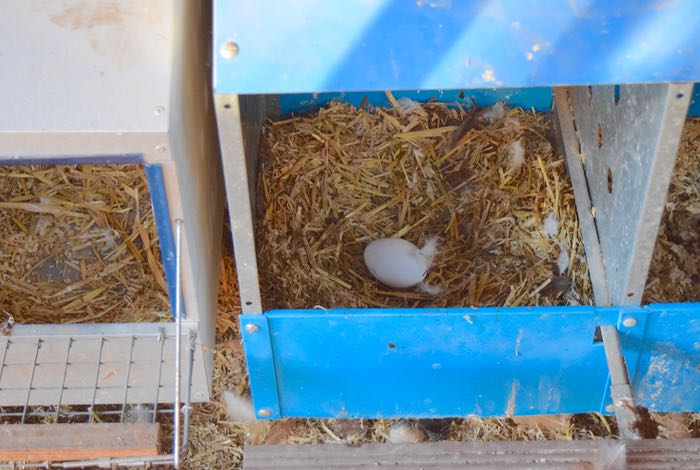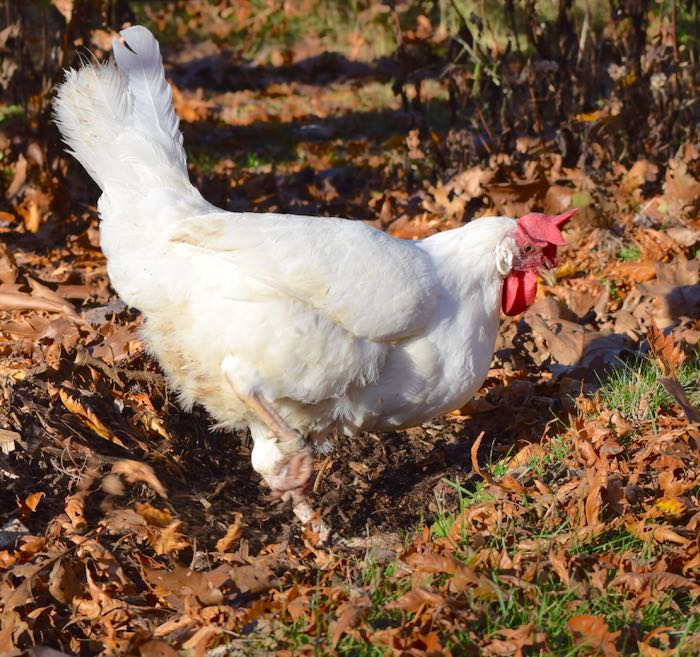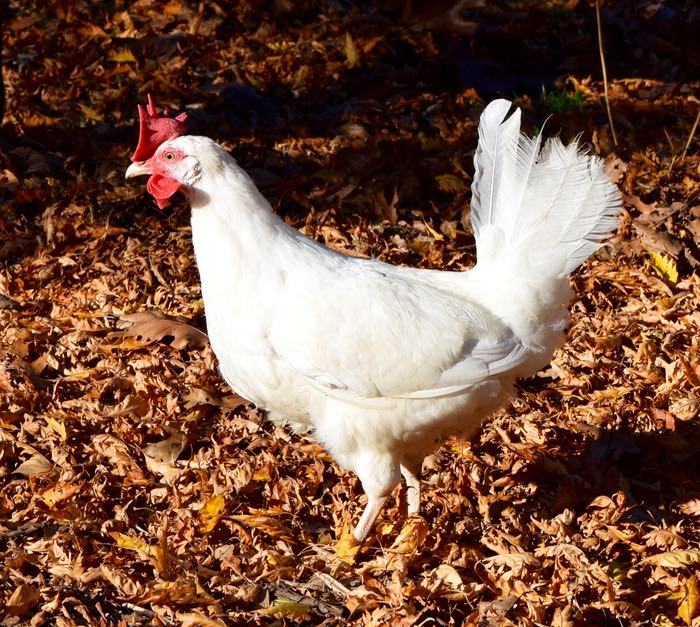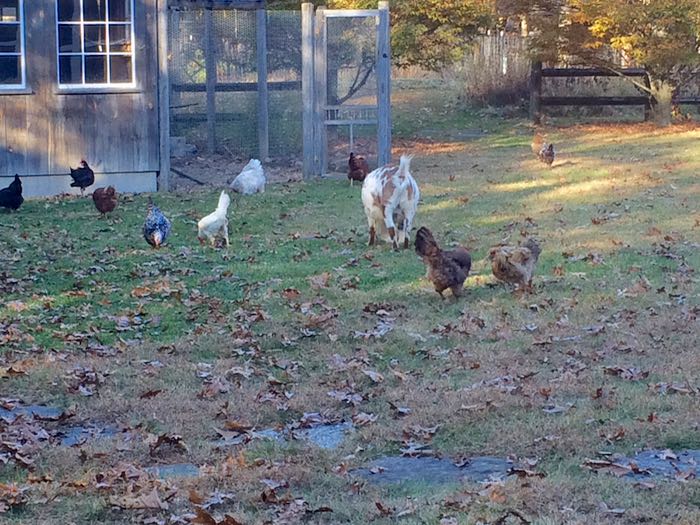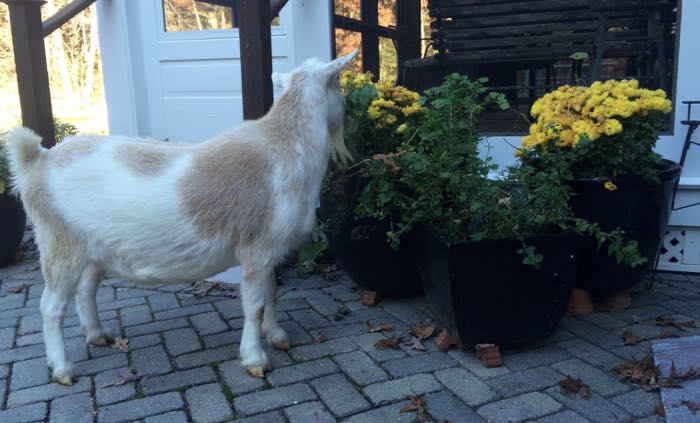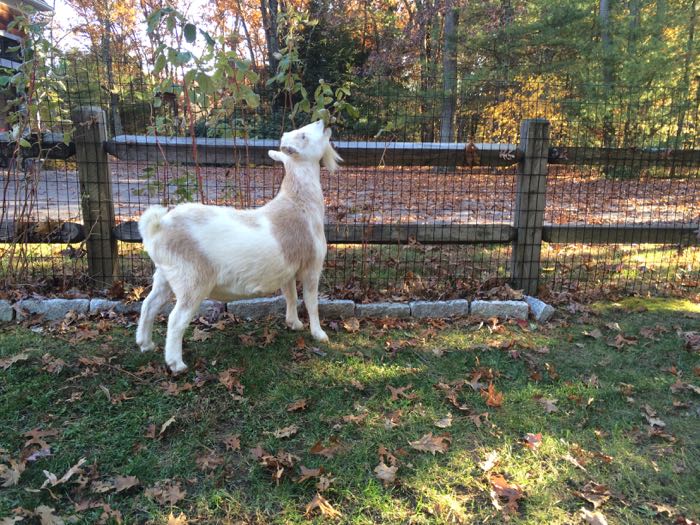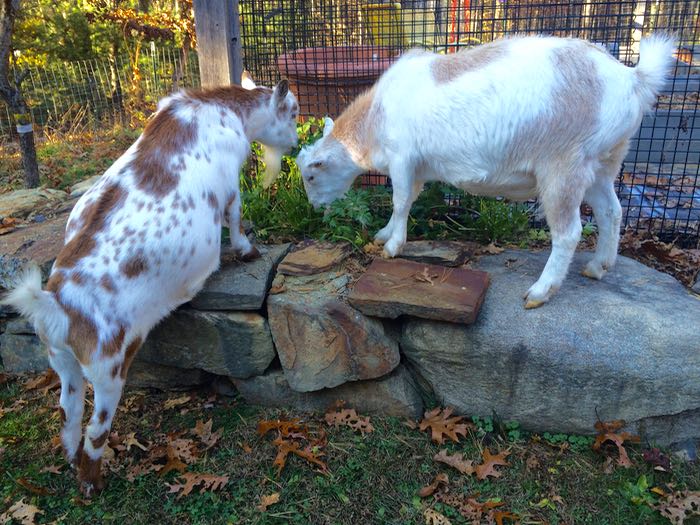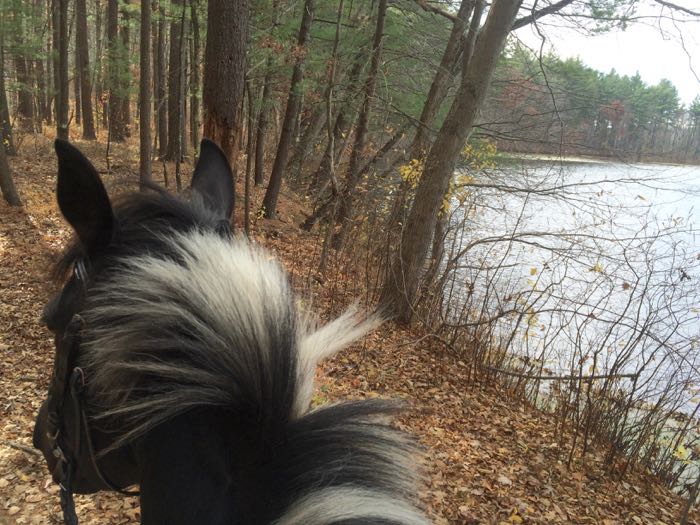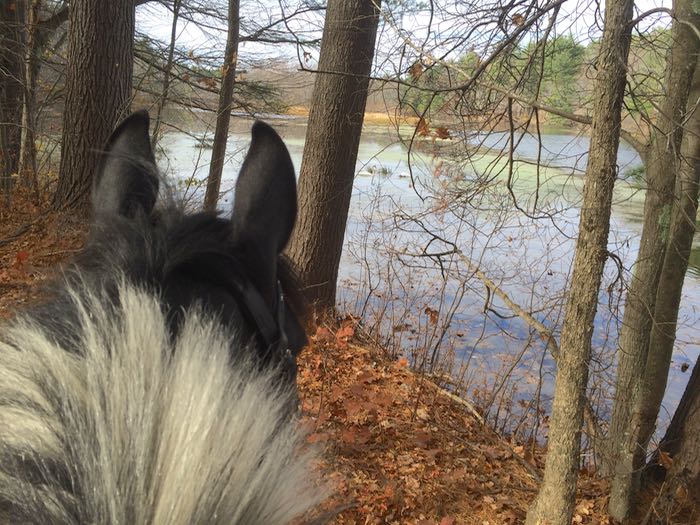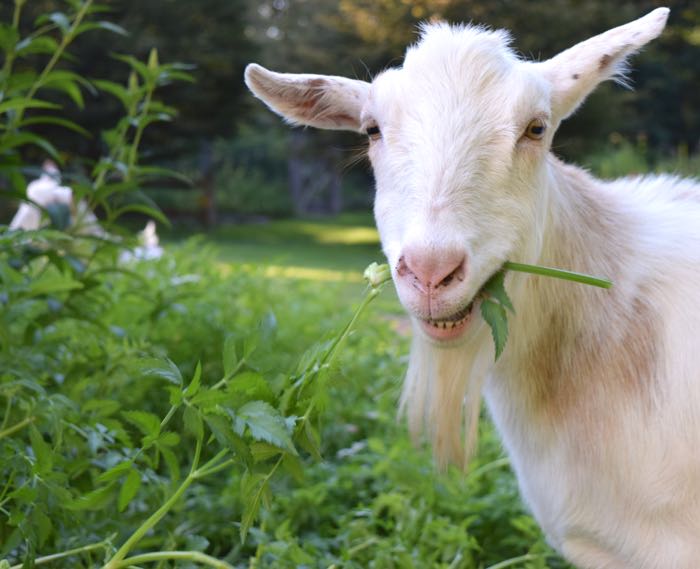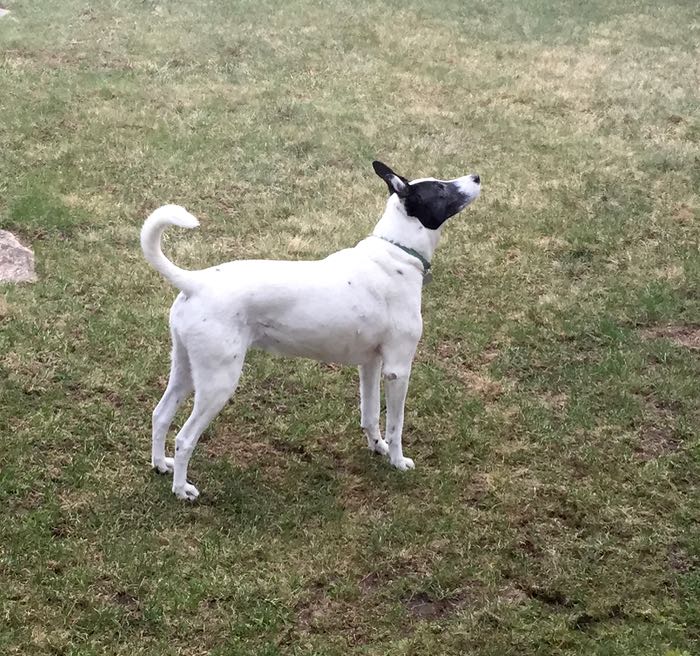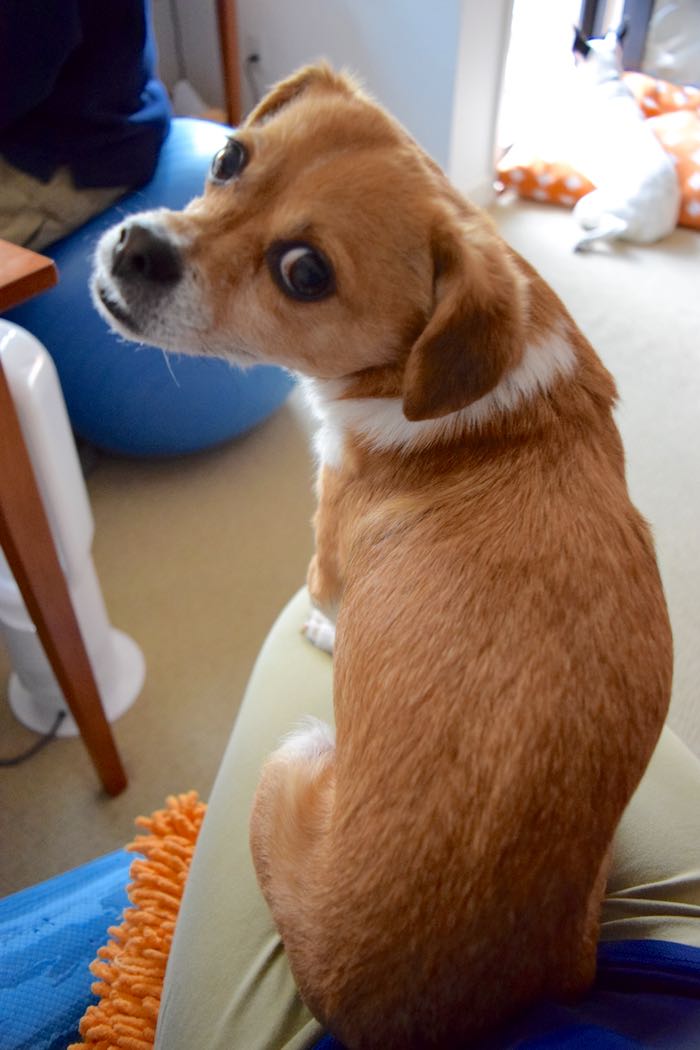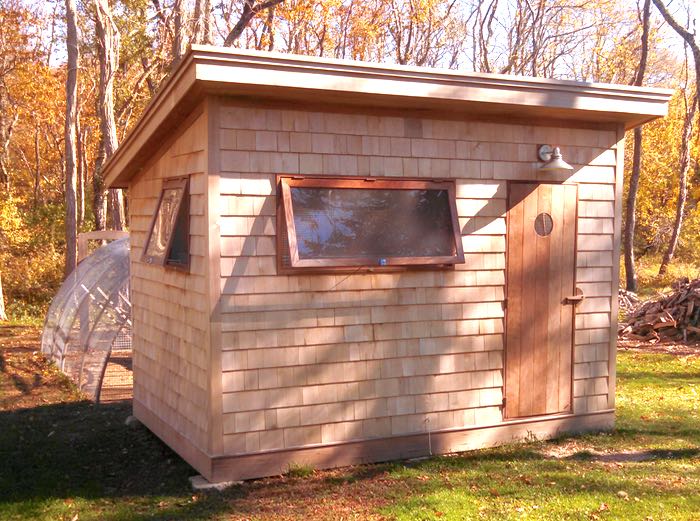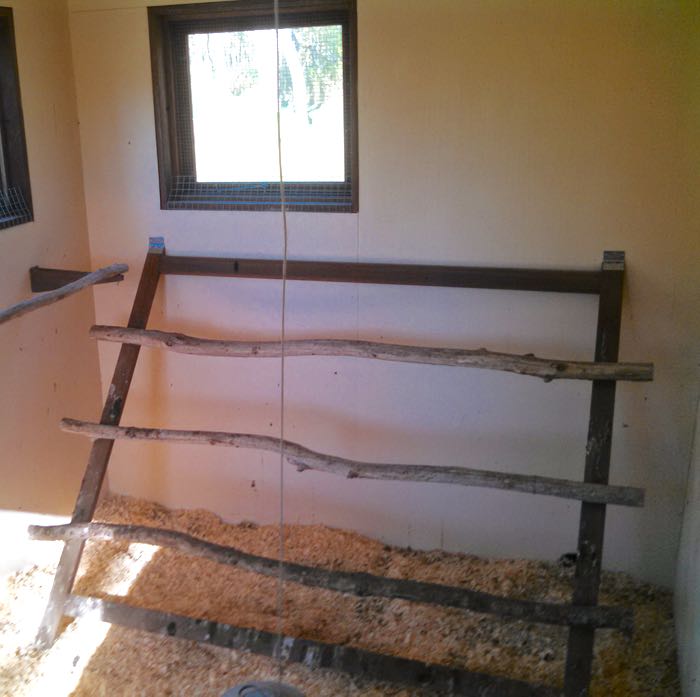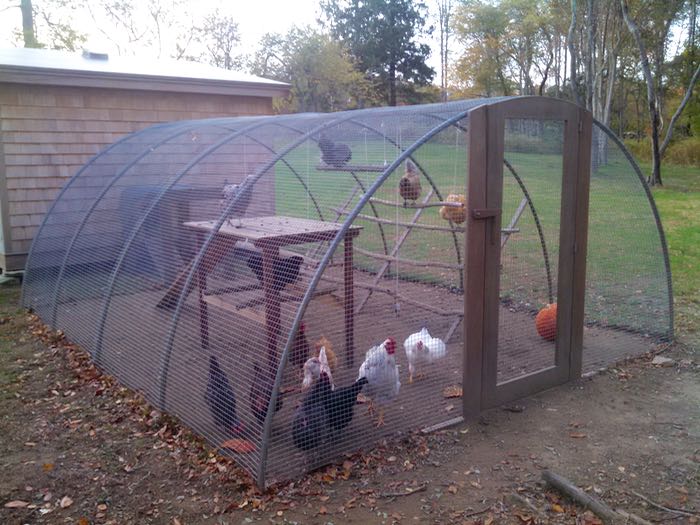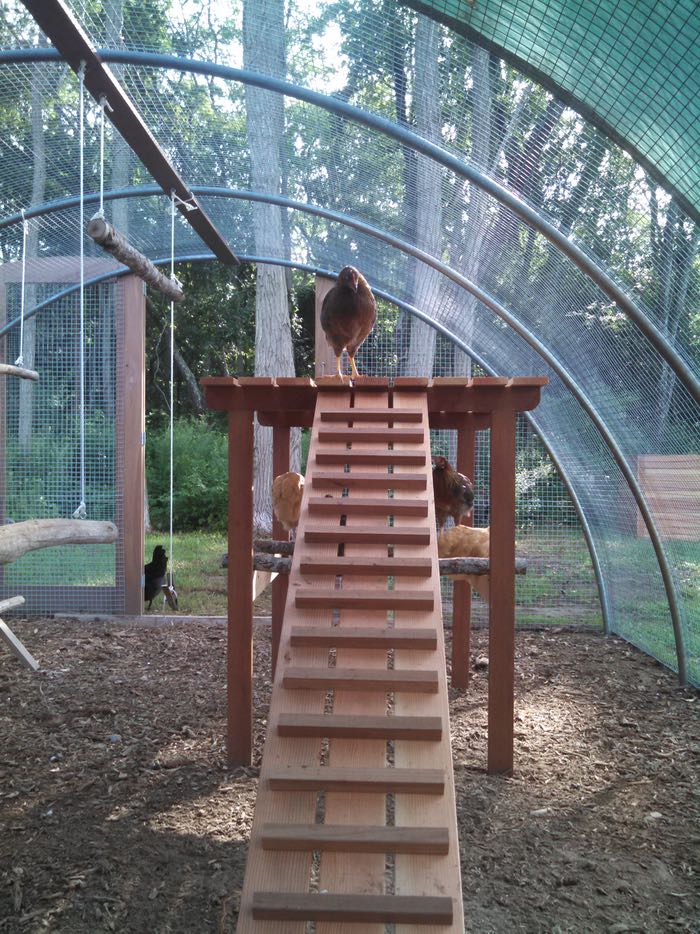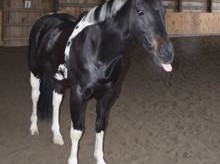The Gems and the Ladies know each other – and for the last couple of years have foraged on the lawn at the same time with no issues. But because these two flocks are housed separately, they keep to themselves. The Gems forage up towards the meadow and the Ladies stay in the woodland border near their Little Barn. I want to put them all in the Big Barn this winter and so I’ve been trying to get them to interact. For this, I bring out the cracked corn – a treat that none of the hens, even the shyest, can resist.
When I shake the container and call them over to a neutral spot on the lawn, their personalities become obvious. Pearl, the cochin, hangs back, and then pecks at the edge of the group. Veronica, the Marans, watches from a distance and cautiously approaches. It’s no surprise that Twiggy comes running. Not only is she always voraciously hungry, but she has lived with both groups.
Quite awhile back, Misty was banished from the group of girls that she grew up with because she was chasing and pecking at them. She learned to fit in with the Gems, who did not allow her to get to the top of the pecking order. Unlike Twiggy, though, she is cautious about making the reacquaintance of her former roommates. This is not because her temperament has mellowed, but rather because she is going through a dramatic molt, and she knows she’s not at the top of her game.
In fact, because a few of the more dominant hens are going through the molt, this is the perfect time to combine the flocks. The dynamic is in flux – top-ranked hens are unsure of their status – and so a new order should sort itself out quickly. At least, that’s the hope.
I’m planning on a couple of more meet-and-greets on the lawn. Agatha seems to be enjoying all of these interactions. She’s even including the goats in her social circle.
If only they were all like Agatha!
